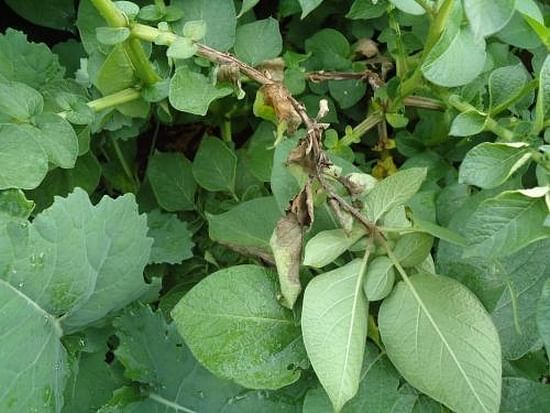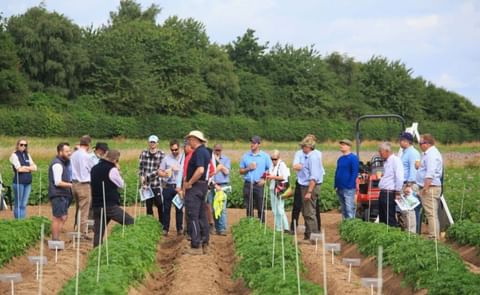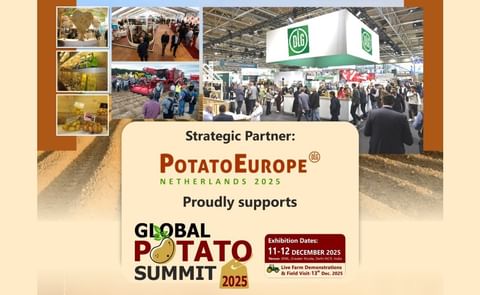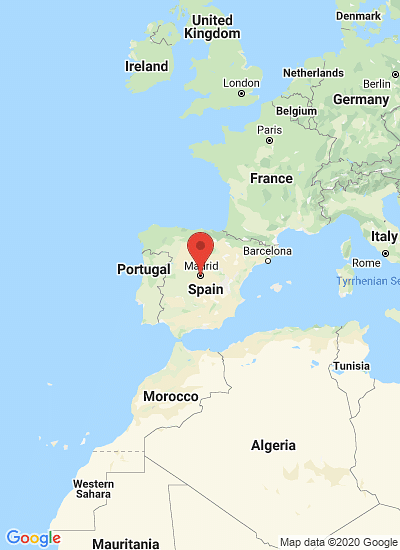Scientists at the NEIKER-Tecnalia Basque Institute for Agricultural Research and Development have studied the genetic structure of Phytophthora infestans —responsible for potato blight— and have identified the existence of the Blue13 (13_A2) genotype for the first time in Spain.
The identification has been carried out by means of genotyping using micro-satellite markers (SSR). The discovery stems from the results obtained in the PhD thesis by the agricultural engineer Néstor Alor, submitted at the University of Lleida and supervised by Dr José Ignacio Ruiz de Galarreta.
The Blue13 strain of Phytophthora infestans is the most aggressive genotype currently present in Europe and has been detected on potato fields in the provinces of Araba-Álava, Orense and Tenerife.
The fungus responsible for the blight is constantly evolving and forming more virulent, aggressive variants than the ones existing until a few years ago. This fact means potato producers are finding it increasingly difficult to combat and control the disease.
What is more, NEIKER-Tecnalia researchers have identified two variants known as 'Misc' found in samples from Araba-Álava and Cádiz. These variants do not coincide with any other strain described in Europe so far, which could mean that they have originated through the sexual recombination of the two existing mating types (A1 and A2).
The possible crossing of the two sexual types of the fungus would imply a significant change in the epidemiology of the pathogen in Spain. One of those isolated and identified as 'Misc' originated in the survey carried out by a Plant Production and Health Laboratory of the regional government of Andalusia located in Seville.
New more aggressive, more resistant strains
NEIKER-Tecnalia has in recent years been detecting new physiological strains of the pathogen with a hitherto unseen aggressiveness and resistance to certain active ingredients in the fungicides currently used to combat the disease. It has also been observed that the new strains are, in turn, adapting to adverse climate situations, which is enabling them to broaden their scope for action in conditions in which previously they did not develop.

Phytophthora affected potato plant (Courtesy: Neiker Tecnalia)
What is also needed is the setting up of warning systems of the disease by means of alert stations plus the effective application of crop protection products.
In this respect, what is becoming essential is the combination of different active ingredients to prevent the emergence of resistance in the fungus and which results mainly from the repeated use of the same active ingredient.
Surveys in eight provinces
The study was carried out on samples of P. infestans from eight Spanish potato-producing provinces: Araba-Álava, Cádiz, Córdoba, Ciudad Real, Jaén, Orense, Tenerife and Seville. The analyses were made in collaboration with the Euroblight research group, which is running the project "Potato blight mapped in Europe".
NEIKER-Tecnalia is participating in this initiative alongside centres with great experience in potato research, like the James Hutton Institute of Scotland and the University of Wageningen in the Netherlands.
This year, Neiker-Tecnalia will continue conducting surveys in other areas that are important in potato cultivation and which until now have not been included in the sampling; the aim is to complete the map of all the production areas in Spain. A further aim is to expand the study to other species of great economic importance, such as the tomato, another major crop that hosts blight. The survey will help to provide more in-depth knowledge about the evolution and epidemiology of the disease, and thus improve the strategies for controlling this pathogen.








